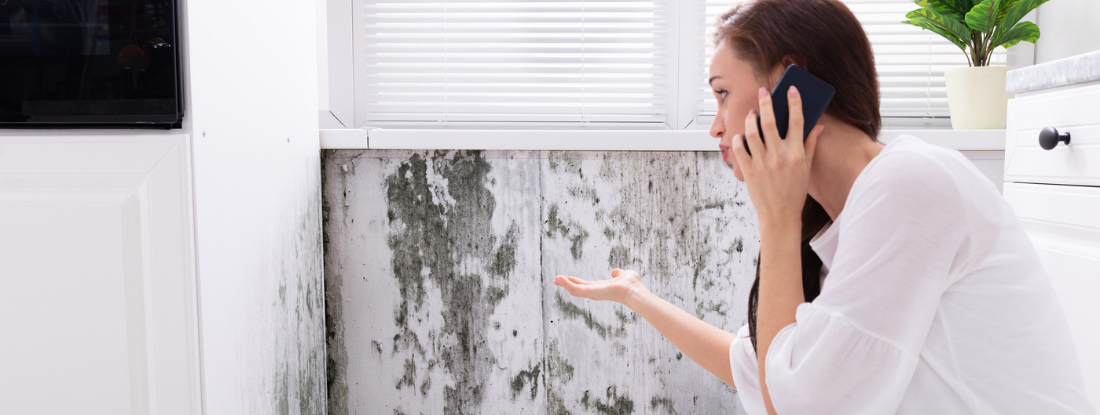Necessary Actions After Mold Remediation
Necessary Actions After Mold Remediation
Blog Article
Professional Tips for Message Mold Removal Success
In the realm of mold remediation, efficiently removing mold and mildew is just half the fight; the true difficulty exists in stopping its reappearance. By adhering to expert ideas and finest methods, people can safeguard their spaces versus mold and mildew renewal and keep a healthy and balanced interior environment.
Monitor Humidity Degrees Frequently
Routine tracking of humidity degrees is essential in guaranteeing the effectiveness of blog post mold and mildew removal efforts. After completing mold and mildew remediation procedures, keeping ideal moisture levels is vital to avoid mold and mildew re-growth and guarantee a healthy and balanced interior environment. Surveillance humidity levels permits very early detection of any spikes or variations that might potentially bring about mold and mildew revival. High humidity degrees above 60% develop a helpful atmosphere for mold to flourish, making routine checking a proactive procedure to stop any future mold and mildew problems - Post Mold remediation cleaning.
In addition, establishing a regular timetable for humidity checks, especially in risky locations such as kitchen areas, cellars, and shower rooms, is a proactive strategy to mold avoidance. By constantly keeping an eye on moisture levels, home proprietors can efficiently minimize the risk of mold and mildew reoccurrence and preserve a healthy interior atmosphere post-remediation.
Conduct Thorough Inspections Post-Remediation
Complying with the completion of mold removal procedures, it is critical to carry out extensive evaluations to verify the performance of the remediation procedure. These post-remediation assessments are essential in guaranteeing that the mold problem has actually been efficiently attended to which there is no reoccurrence or continuing to be mold development. Inspections should be executed by qualified experts that have knowledge in determining mold and examining interior air top quality.
Throughout these assessments, numerous approaches such as visual evaluations, air sampling, and surface area sampling might be employed to extensively examine the remediated areas. Aesthetic evaluations include a detailed evaluation of the properties to look for any type of visible indicators of mold growth or water damages. Air tasting aids in determining the air-borne mold spore degrees, while surface sampling can detect mold particles on surface areas.
Implement Appropriate Air Flow Techniques
After guaranteeing the performance of the mold and mildew remediation process with extensive examinations, the following crucial action is to focus on applying appropriate ventilation methods. Appropriate air flow is essential in protecting against mold reoccurrence by controlling moisture levels and advertising air blood circulation.
Proper air flow not only aids in preventing mold and mildew growth but additionally contributes to the total health and wellness and comfort of passengers. By making sure appropriate air flow throughout the residential or commercial property, you can minimize the risk of mold regrowth and develop a healthier living setting.

Use Mold-Resistant Materials for Repairs
To boost the long-lasting performance of mold removal efforts, incorporating mold-resistant materials for repair services is essential in alleviating the danger of future mold growth. Mold-resistant products are developed to endure moisture and inhibit mold growth, making them an essential selection for areas vulnerable to moisture and humidity. When fixing areas influenced visit the website by mold and mildew, using materials such as mold-resistant drywall, mold-resistant paints, and mold-resistant caulking can assist prevent mold reoccurrence.
Mold-resistant drywall is an excellent choice to standard drywall in locations like basements and bathrooms where wetness degrees are greater. This kind of drywall has a special finish that resists mold and mildew development also when exposed to damp conditions. Furthermore, using mold-resistant paints containing antimicrobial agents can further hinder mold and mildew advancement on ceilings and wall surfaces.
In locations where wetness is typical, such as bathroom and kitchens, using mold-resistant caulking around tubs, home windows, and sinks can help secure out water and protect against mold from taking hold in fractures and crevices. By spending in these mold-resistant materials during repairs post-remediation, you can considerably decrease the likelihood of future mold problems and maintain a healthier interior setting.
Maintain Tidiness and Address Water Issues
Ensuring sanitation and promptly resolving water problems are basic techniques to support in guarding indoor spaces from mold and mildew reinfestation. After mold removal, it is vital to keep a tidy atmosphere to avoid the regrowth of mold and mildew (Post Mold Remediation). Normal cleansing, dusting, and vacuuming can help eliminate any type of lingering mold and mildew spores and avoid them from proliferating and settling. Furthermore, keeping interior areas completely dry and addressing any kind of water issues promptly is essential in mold prevention. Leakages, water breach, or high humidity levels can browse this site create the best breeding place for mold, so it is crucial to take care of any water-related troubles quickly.
To keep tidiness, think about utilizing HEPA filters in vacuum cleaners and air purifiers to trap mold spores and avoid their blood circulation airborne. Furthermore, making certain proper air flow in locations vulnerable to moisture buildup, such as kitchens and shower rooms, can aid maintain humidity degrees in check. By remaining cautious about cleanliness and attending to water problems quickly, you can efficiently stop mold and mildew reinfestation and keep a healthy and balanced interior setting.
Verdict

In the world of mold removal, effectively getting rid of mold is just half the fight; the true difficulty lies in preventing its reappearance. After finishing mold and mildew remediation procedures, maintaining ideal humidity degrees is vital to stop mold and mildew re-growth and guarantee a healthy indoor setting. High humidity degrees above 60% create a helpful setting for mold and mildew to grow, making normal monitoring an aggressive measure to avoid any kind of future mold and mildew issues.
To boost the long-term performance of mold removal initiatives, incorporating mold-resistant materials for fixings is essential in minimizing the threat of future mold development. After mold and mildew remediation, it is crucial to maintain a clean atmosphere to prevent the regrowth of mold and mildew.
Report this page